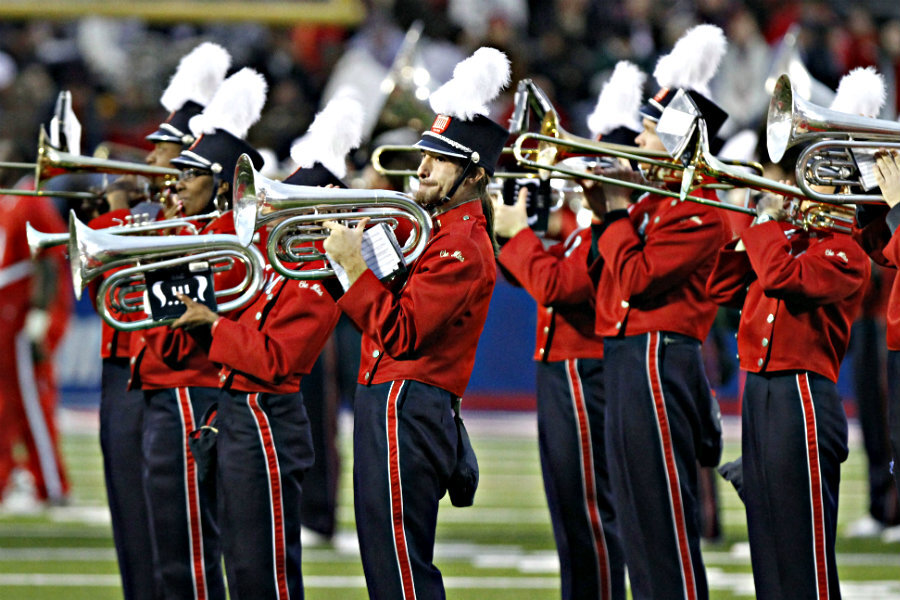Ole Miss won’t play 'Dixie' at football games anymore: What changed?
Loading...
The University of Mississippi will drop one of the most beloved southern anthems, “Dixie,” from its marching band program, due to the historical context of the song, the school’s athletics department announced on Friday.
Written by a New Yorker, “Dixie” became popular as secessionists sought a new anthem to represent their cause. The University of Mississippi, affectionately known as Ole Miss, made the decision to abandon the song this year as it seeks to create a more welcoming environment for all of its students.
“The Athletics Department asked [the marching band] to create a new and modern pregame show that does not include Dixie and is more inclusive for all fans,” said Ole Miss Athletic Director Ross Bjork in a statement.
First composed as part of a minstrel show by New York composer Daniel Decatur Emmett in 1859, Dixie was played at Confederate president Jefferson Davis’s inauguration in 1860 and dubbed the “National Anthem of Secession” by the Richmond Dispatch. When Ole Miss played it at their games, according to author Stuart Stevens, it conjured up the ghost of the Confederacy.
Ole Miss’s decision to jettison this vestige of the Civil War South is no real surprise. The university has been working to remove Confederate symbols for years – “Dixie” has been on the chopping block for at least a year, but the decision to finally remove had been postponed due to logistics.
"We felt that it’s the right thing to do. It’s time to move forward," Mr. Bjork told Mississippi Today. "It fits in with where the university has gone in terms of making sure we follow our creed, core values of the athletic department, and that all people feel welcome."
Previous university chancellors have made a concerted effort to abandon other symbols of the Confederacy. In 1997, former Chancellor Robert Khayat banned sticks from the football stadium in attempt to keep Confederate flags out. Then, in 2003, Ole Miss ditched “Colonel Rebel,” an old Confederate soldier character who served as the school’s mascot. The current Ole Miss mascot is the black bear, but the team is still known as the Rebels.
In 2009, another former Chancellor, Dan Jones, also asked the band to remove a song from its play list. The marching band agreed to stop playing “From Dixie with Love,” a mashup between "Dixie" and "The Battle Hymn of the Republic," as it often prompted fans to chant “the South will rise again.”
According to local newspaper the Oxford Eagle, current chancellor Jeffrey Vitter has also established the Chancellor’s Advisory Committee for History and Contextualization, which handles discussions regarding the school’s remaining monuments and symbols with ties to the Confederacy.
“The initial goal will be to recommend which Oxford campus sites should be contextualized, so as to explain the environment in which they were created or named,” Mr. Vitter told the Oxford Eagle. “The committee will then be charged with designing content and format to contextualize the designated sites.”
Many have responded positively to the school’s decision to make a change.
“I think it’s a step in the right direction of the culture shift that I think is very necessary at the University of Mississippi,” said Dominique Scott, treasurer of the NAACP chapter at Ole Miss, to the Clarion-Ledger. “For where the university is trying to go, to create an inclusive culture and a culture that welcomes students from all backgrounds and walks of life.”
Despite its deep Southern roots, Ole Miss is gaining a reputation for eschewing racially charged and divisive symbols, a move that several universities and public officials have welcomed since the racially motivated shooting at Charleston's Emanuel AME church last June.
Not only have the Confederate flag and its various incarnations been under attack since last June, The Christian Science Monitor reports, but so have statues and buildings named after Confederate leaders.
Ole Miss’s home state of Mississippi, however, remains the last holdout in the effort to remove vestiges of the Confederate battle flag from state flag designs.








